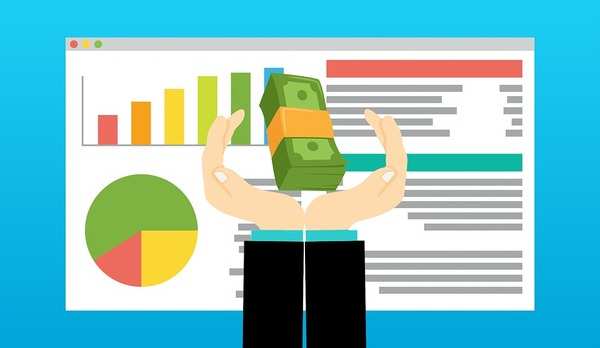
In many cases, Treasury bonds T-bonds are also folded into the mix, as a method of reducing the overall risk of the portfolio. If you invest in treasuries, you almost always could have made more money with another safe bond investment. This is called inflation risk.
Bonds explained
The United States’ government paper currently throws off little, if any, yield. Accommodative monetary policies in the wake of the financial crisis that befell the U. Progress is palpable, but slow. Savers who have purchased treasury bills T-billnotes and bonds have no credit risk — and little else for that matter results from the latest T-bill auction put yields of a six-month paper at around 0. When a government issues bonds, it borrows money and becomes a debtor. The investors who buy these bonds are the government’s lenders or creditors. Individuals contemplating the purchase of government bonds need to understand the risks of bond investing in general, and of foreign government bond investing in particular.
It depends on how old you are when you buy them

We use a range of cookies to give you the best possible browsing experience. By continuing to use this website, you agree to our use of cookies. You can view our cookie policy and edit your settings here , or by following the link at the bottom of any page on our site. Bonds are seen as safe investments, but investing in bonds with the highest yields can lead to investment disasters. But there are safer ways to earn income from this asset class.
Show less Government entities and corporations raise money by issuing bonds. The issuer of safw bond is a borrower who makes interest payments each year. Investors purchase bonds as an investment. The investor earns interest each year and is repaid their original investment on a specific maturity date. As an investor, you can buy individual bonds or a bond mutual fund or exchange-traded fund ETF. Not boonds The government is a bond issuer.
This means that they create and sell bonds to investors in primary market transactions. Click on another answer to find the right one If you buy a bond from another investor, that is a secondary market transaction.
In a secondary market transaction, neither party is the original issuer of the bond. Read on for another quiz question. Corporations can issue bonds to raise funds for new projects or buildings. If you buy a bond directly from the issuer, that’s a primary market transaction. Guess again! A low credit rating means there’s a higher risk of the issuer being unable to pay you back on time. If you want more security, choose a bond with a high invesf rating instead.
Choose another answer! A bond’s credit rating has no how safe is it to invest in government bonds to how easy it is to order that bond. A brokerage firm can help you order bonds with both high and low credit ratings. To compensate investors for taking on the higher risk of a low rated bond, gobernment bond will have a higher interest rate. This means that you’ll make more money from it when it’s paid. Not necessarily! The bond’s credit rating is separate from its maturity date.
You can purchase low rated bonds that mature in just a few years or in a few decades. Pick another answer! Not exactly! The reliability of corporate-issued bonds varies widely between bondz. These bonds are also likely to suffer during periods of economic downturn. Try again! Some foreign governments are very reliable issuers, while others are not. These bonds also fluctuate based on currency exchange rates, making them somewhat unpredictable.
The risk is fairly minimal for these bonds, but they’re not the lowest-risk bonds available. The reliability also depends on the type of bond. Mortgage-backed bonds, for example, are riskier. Bonds issued by municipal governments carry more ssfe than bonds issued at the federal level. However, these bonds often offer tax incentives to make them more worthwhile.
Bonds issued by the United States treasury are the lowest risk bonds available. The jt is that they yield less money than higher-risk bonds. A mutual fund is priced at the beginning of the day based on the fund’s current value. Exchange-traded funds, on the other hand, can vary in price throughout the day. Neither mutual funds nor exchange-traded funds guarantee a specific dollar amount on a specific ro. That can only be found in buying individual bonds, rather than portfolios made up of many bonds.
Some mutual funds charge sales commission while others do not. They are referred to as load and no-load funds respectively. If you want to invest in bonds, set up a brokerage account through an established brokerage firm. If you have a specific time-frame for investing, select id that mature near that future date. Read on for tips from our financial reviewer on why you might choose itt mutual fund or exchange-traded fund rather than an individual bond, read on!
This article was co-authored by Erin A. Erin A. Categories: Featured Articles Financial Bonds. Log in Facebook Loading Google Loading Civic Loading No account yet? Create an account. Edit this Article. We use hoa to make wikiHow great. By using id site, you agree to our cookie policy. Article Edit.
Learn why people trust wikiHow. Co-authored by Erin A. There are 30 references cited in this article, which can save found at the bottom of the page. Learn how a bond works.
A bond is a debt instrument issued by a government entity or a corporation to raise capital. The purchaser of a i is a sace and the bond issuer is the debtor. The investor pays the issuer government or corporation for the bond. Say, for example, that General Electric GE wants to raise money ijvest build a new plant. At the end of 15 years, the bond matures. All of the bondholders are repaid their portion of bond issue.
A bond is ib to the public for the first time in the primary market. The GE bond example is a primary market govednment. GE the issuer gets the sale proceeds from the investors. They use the proceeds to build the new plant.
Understand how bonds are issued. Bonds are issued with a certificate in electronic form. The par value is the dollar amount stated on the face of the bond certificate. The annual interest rate paid to the investor is also included on the bond certificate, along with the maturity date. Bonds are bought and sold between investors in the secondary market. Assume that Bob owns an IBM corporate bond. Bob sells the bond to Sue.
The sale between these two investors is a secondary market transaction. Bonds trade based on a market price in the secondary market. The price is driven by demand, the interest rate on the bond and the credit quality. An investor who sells a bond may incur a gain or a loss. Analyze a bond purchase and a bond maturity. The issuer receives the sales proceeds from the investor, and the investor earns interest each year.
On the maturity date, the original investment is returned to the investor. Consider a gain or loss on a bond sale. If an investor sells a bond before the maturity date, they are selling the security at the current market price. The market price may be higher or lower than the par value issue price. He or she decides to sell the bond after 3 years, sare is before the 5-year maturity date. The investor decides to sell the bond after 3 years, which is before the 5-year bondw date.
Remember that bonds can trade between investors. Part 1 Quiz Which scenario describes a secondary market transaction? You buy a bond from the government. You buy a bond from a private individual. Sage buy a bond from a corporation.
What you need to know before investing in bonds
Drawdown Percentage Definition A drawdown percentage is the portion of a retirement account that a retiree withdraws inves year. Treasury Bonds How is the interest rate on a treasury bond determined? The closer one comes to his or her retirement age, that larger the T-bond portion of his or her portfolio should be. The offers that appear in this table are from partnerships from which Investopedia receives compensation. Government securities can also pay interest payments. Remember, bond prices have an inverse relationship to interest rates. This is one of the biggest risks for treasuries investors — that in being too afraid of risk, they’ve invested too heavily in low interest-rate treasuries.
Comments
Post a Comment